Kei Tua o te Pae
Kei Tua o te Pae/Assessment for Learning: Early Childhood Exemplars is a best-practice guide that will help teachers continue to improve the quality of their teaching.
The exemplars are a series of books that will help teachers to understand and strengthen children's learning. It also shows how children, parents and whānau can contribute to this assessment and ongoing learning.
We are making improvements to our download-to-print functionality. So if you want a printed copy there are PDF versions available at the bottom of the main cover page.
Exemplars – Ngā tauaromahi
-
Dom rebuilds
-
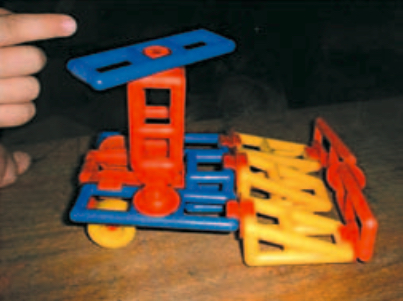
23 July: “Dom, will you be able to make this again?”

12 August: Remaking the construction
I captured this photo of Dom today. He was using a photograph of a construction in his portfolio to make another one just the same! Dom has done this a number of times and said to me that it made it easier having the picture there to remake his construction.
-
-
Oh, no! That's not right!
-
Child: Lauren
Date: 21 February
Observer: Julie
Learning Stories
I invited Lauren to do an overprint on the cat screen print she did the other day.
“What else would you like to have in this picture, Lauren?”
“A basket! With blankets that go there and there!”
“Fantastic!” I said and watched as she drew her cat basket and cut it out.
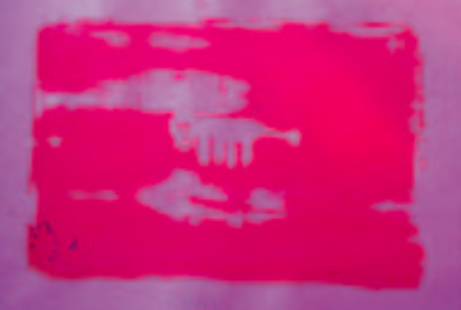
Once the print was made, she looked at it and said, “Oh, no! That’s not right! The cat needs to be in the basket – not up there!”
“You could draw another one if you like – you have another cat print you could use.”
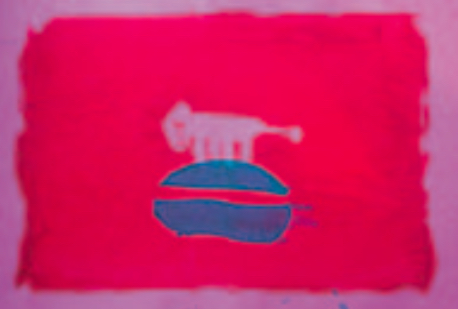
“That’s a good idea!” she said.
She drew the basket. She then overprinted her screen print. “Oh, no! It’s too big! Never mind, I’ll put some toys in it.”
She drew a mouse, a cat’s drink bottle – with milk in it – and a ball. As she was drawing, she said, almost to herself,
“I’ll have to concentrate!”
And she did, and we were both delighted with what she produced. Lauren cut the basket and handle out and most of the mouse toy. I helped with the drink bottle and tiny ball.
The second print met with a far more favourable reception. “I like that!” Lauren said.
It was so wonderful being part of Lauren’s project today, and I’m glad she was happy with the result.

Short-term review
Lauren is far more comfortable and confident with the screen printing process.
Lauren was really focused and involved with what she was doing. She had a clear idea of how she wanted her basket to be and was prepared to have another go to achieve what she wanted. Great persistence! It’s fantastic that Lauren can express how she feels and is so articulate.
What next?
More screen printing.
I believe that “cats” is a subject dear to Lauren’s heart. How can we extend her knowledge and interest? Books, factual books, different sorts of cats, making cats out of material.
-
-
Louie going out the door
-
Child's name: Louie
Date: 21 September
Teacher: Nic
Learning story

Louie lay on his tummy on the floor. The door to the outside had just been opened. As soon as he spotted this, he was off! The floor was scattered with many toys as children had just been playing inside, but this did not bother Louie as he had made his way to the outside world, using his arms to pull himself along as he slid on his tummy. He pushed each toy away as he came to it and finally made it to the door. The door has a slight rise and step down from the deck! Louie smiled with great delight about being outside and made his way to the railing, where he managed to pull himself up and peer through the holes to see what was going on!
Short-term review
What great determination – Louie had to get outside that door! He knew what he wanted and went for it, moving whatever got in his way! It was very rewarding to be able to get out there amongst it all and be part of the action!! It just goes to show how important it is for young babies to be able to make decisions about where they want to be and that access (albeit with some obstacles this time) to the outdoors is generally freely available.
-
-
I know, you could write all this down!
Child’s voice
Child: Olivia
3 September
Teacher: Judy
Olivia has just moved into a new home, which the family has been building up to for a few months. Olivia sat down next to me on the edge of the sandpit and told me all about her new house. After a while, she looked at me and said thoughtfully, “I know, you could write all this down!”
I went inside to get paper, pen, and clipboard. On my return, Olivia continued her story: “I’ve got one bed in my room and it is all white, and Tim has got two beds, and Mum and Dad have got one big double bed. Grandad’s room is downstairs. We are all upstairs.
“We have stairs, you know, and lots of colours in the bathroom. Why don’t you write while I go and play with the girls?” Off she went to play with her friends.
Short-term review
Olivia has known for quite some time about her move to her new home, and her excitement and joy was evident in the way she was describing the house to me.
Olivia is confident and articulate when expressing herself and thinks carefully before sharing her information.
Skills, knowledge, and dispositions Olivia is demonstrating in relation to literacy:
- What is said can also be written to read later.
- It is a good idea to record important events and information.
- Information about Olivia’s life can be shared with her teachers in a way that they will understand and appreciate.
-
Brittany and Hayley compare records
-
Learning story
Child’s name: Brittany
Date: 7 October
Teacher: Shelley
Examples or cues A Learning Story
Belonging
Mana whenuaTaking an Interest Finding an interest here – a topic, an activity, a role. Recognising the familiar, enjoying the unfamiliar. Coping with change. Brittany came to the swings. She started to tell me about the trapeze swing she was on.
Brittany told me the story of how her sister, Hayley, had a photo taken on this swing when she was at kindergarten.
Hayley has a photo in her portfolio of being upside down on the trapeze swing. You can see all her tummy.
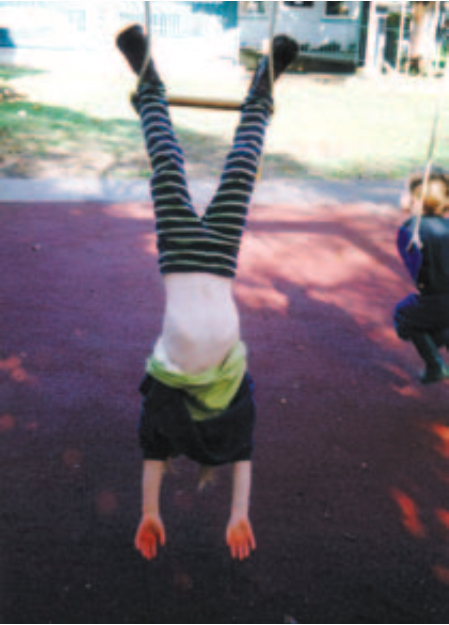
I was holding the digital camera and Brittany asked me if I would take a photo of her, just the same as Hayley, so she could have it in her folder. Brittany arranged herself and I took the photo.
Well-being
Mana atuaBeing Involved Paying attention for a sustained period, feeling safe, trusting others. Being playful with others and/or materials. Exploration
Mana aotūroaPersisting with Difficulty Setting and choosing difficult tasks. Using a range of strategies to solve problems when ‘stuck’ (be specific). Communication
Mana reoExpressing an Idea or a Feeling In a range of ways (specify). For example: oral language, gesture, music, art, writing, using numbers and patterns, telling stories. Contribution
Mana tangataTaking Responsibility Responding to others, to stories, and imagined events, ensuring that things are fair, self-evaluating, helping others, contributing to programme. Short-term review
Hayley is nearly eight. I realised the link the portfolios have for the children, siblings and the whole family. Brittany was exact in her description of Hayley's photo and wanted hers to be the same.
What next?
A reminder, as a teacher, to listen and support children in their need to make sense of their world through recall and revisiting important happenings/achievements over and over.
Learning story
Child’s name: Brittany
Date: 4 October
Teacher: ShelleyLast week, Brittany was chatting about the swings. She said she had had another look at Hayley's portfolio and the picture was not quite the same. In Hayley's, she had both hands released from the trapeze bar. Brittany was still holding onto the bar. Brittany explained that she could only let one hand go. But in a photo Brittany has in her portfolio, she is releasing a leg. Hayley did not have that in her portfolio.
Later in the session, Brittany was on the slippery pole. She asked if this was new, as Hayley did not have this photo.
As a teacher, I find this a fascinating exploration of connections. It is a natural progression for Brittany to measure her skills against Hayley as the same age.
When Hayley visited on Friday, they went straight to the book and Brittany was reminded “My jumper was over my face.” You could only recognise Hayley by her tummy and clothes. Brittany knows we share her interest in her explorations. This is ongoing and such a positive form of competition.
Brittany asked me to take another photo of her on the swing. “I was upside down. One was hanging on, one wasn't. It's hard. Hayley can't do this. Her photo was just upside down. She was letting go. I can do one hand letting go.
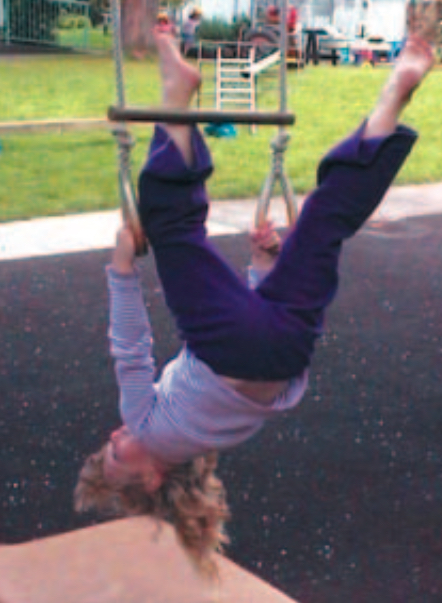
-
-
Alexandra corrects the record
-
Learning stories
Child: Alexandra
Date: 30 November
Teacher: Helen
A Learning Story
Belonging
Mana whenuaTaking an Interest Alex brought her portfolio to me and asked if we could look at it together. She had rushed off to get it after observing me checking through Corey's portfolio, which he was taking home with him today after celebrating his fifth birthday.
We turned to the first page, and Alex pointed out her name in a learning story and then ran her finger in a straight line down the page, pointing out her name again and again and saying, “That's my name.” She did this with the next learning story too.
We slowly worked our way through a few more pages, looking at photos and trying to remember the names of the children who had left some time ago. I read out two short learning stories to Alex. One included Michelle, and Alex pointed to her in the photo and said, “That's Michelle. She's coming to my party.” I read the child's voice on the next page, and she looked closely at the photo and decided she would build the block construction displayed. I suggested that she take her portfolio with her to the block corner so that she could copy it.
Alex built it quickly, but while she was away getting some paper and a felt pen, her construction got knocked over. I sat down near her to help protect her work and hold her portfolio for her as she rebuilt it. She moved closer to me, bringing the paper and felt pen with her. We looked closely at the photo and, after we had discussed the size of the blocks used previously, Alex chose some different blocks. She rebuilt her construction, and we discussed it, comparing it to the photo. She noticed that in the photo she was holding a block in each hand and immediately went back to her building and added the same blocks to her construction. I asked her if the blocks shown in her hands on the photo were later added to that building, and she said they were.
Alex was then satisfied and turned her attention to copying down on her piece of paper the first line and a half of the child's voice.
Well-being
Mana atuaBeing Involved Exploration
Mana aotūroaPersisting with Difficulty Communication
Mana reoExpressing an Idea or a Feeling Contribution
Mana tangataTaking Responsibility Short-term review
Alex enjoyed revisiting the work in her portfolio and reproducing it.
Alex showed great perception of detail by noticing the blocks in her hands in the photo.
She pictured the finished construction in her mind and built it from the unfinished building in the photo.
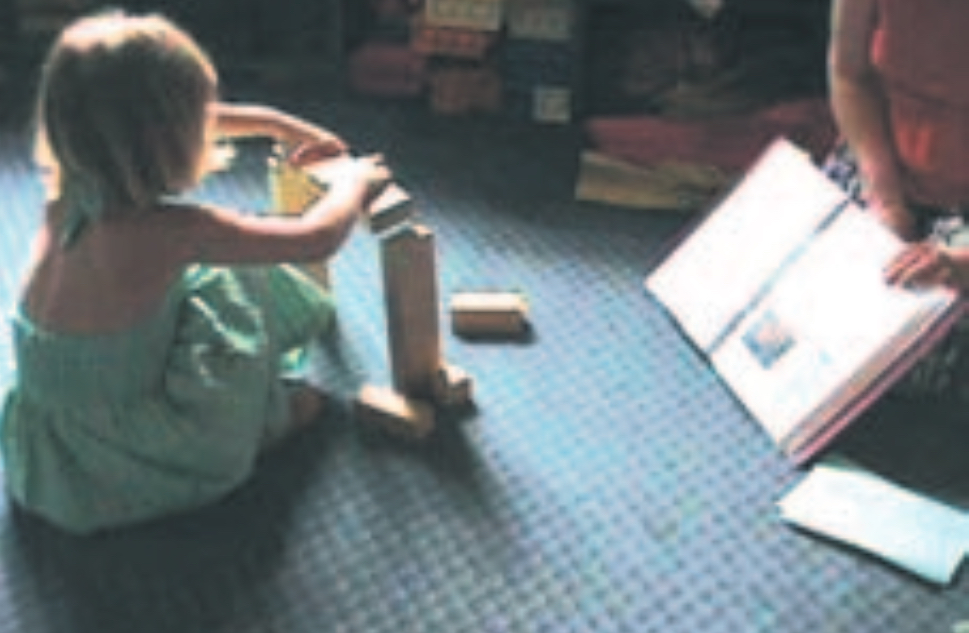


Child: Alexandra
Date: 30 November
Observer: Robyn and Helen
Subject: Tower building and literacy
A Learning Story
Alex appeared with her portfolio and began to look at it with Helen in the back room where the blocks are. She decided to rebuild the tower that was documented in May. Helen's learning story records the narrative in more detail. There was a lot of discussion as Alex chose the exact blocks needed to replicate the original tower. I could feel the excitement and enjoyment Alex was experiencing as the tower took shape.
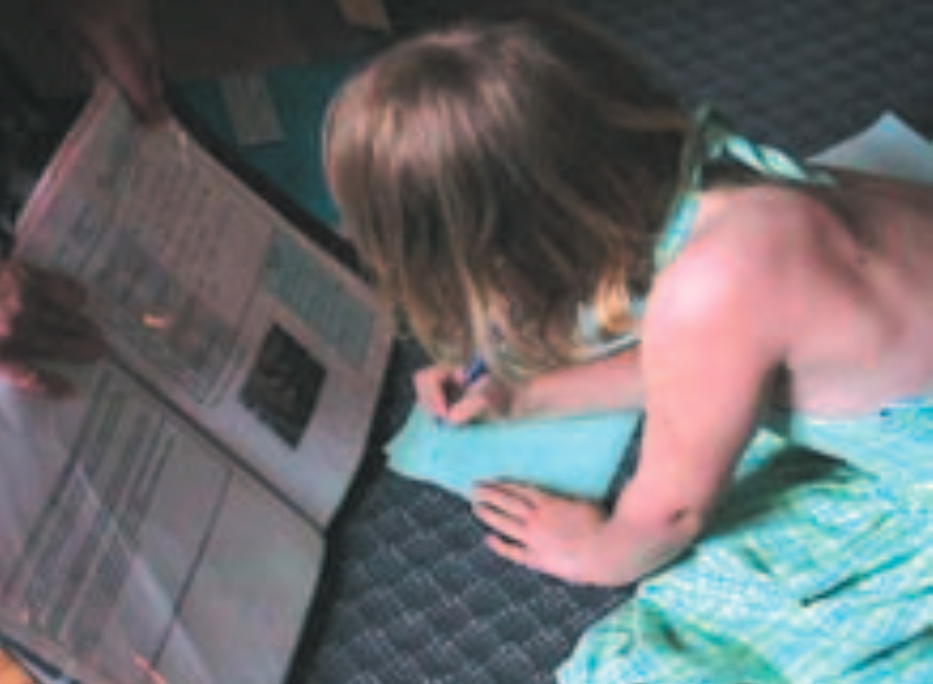

Alex announced that she would write the story and began to carefully copy the story written in her portfolio.
She worked in a very relaxed manner, discussing progress with Helen. It was obviously a very enjoyable situation.
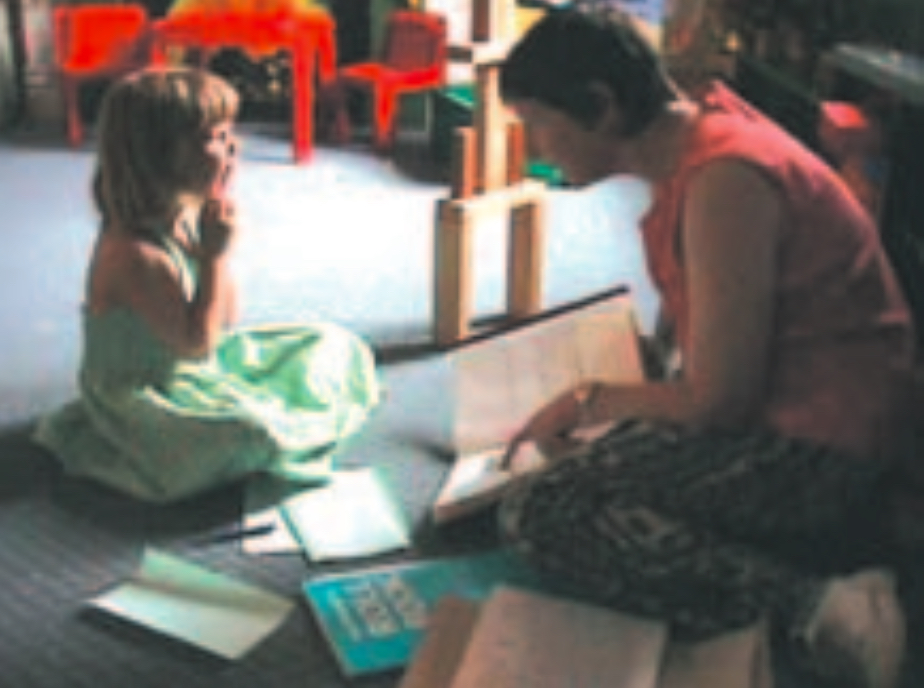
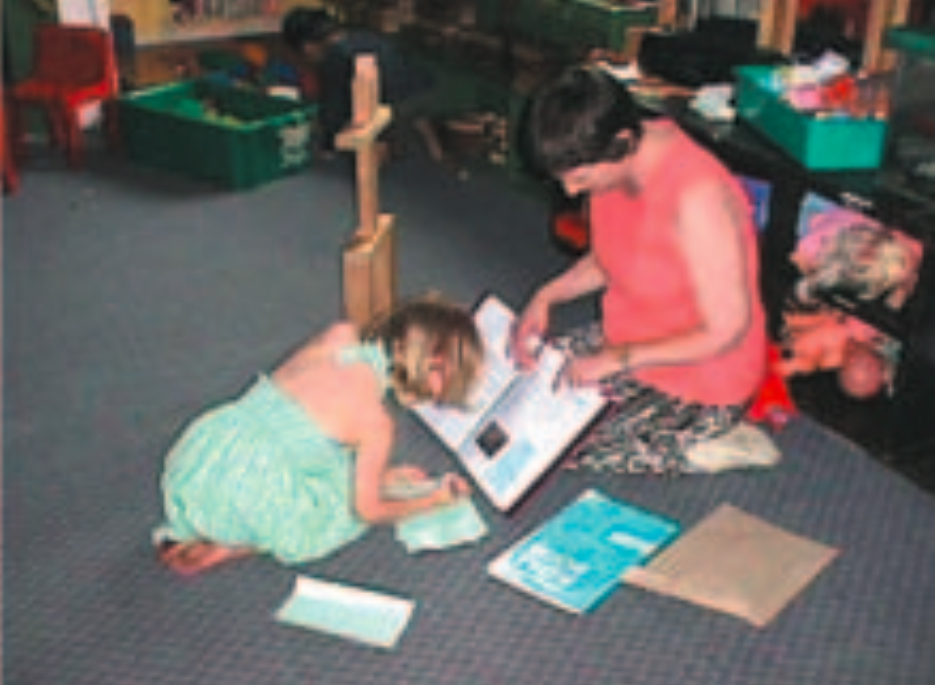
As I watched and photographed, I feel very excited. Alex had initiated the whole exercise, and she was actively pursuing the opportunity to write. She not only connected the narrative in the story to her current block building but also wanted to be the story writer. This has been one of those wonderful moments!
-
-
Jak builds a wharenui
-
Child: Jak
25 June
Observer: Maya
Jak approached me in the back room and asked if I could help him build something. We sat down together and talked about what he would like to build. Jak started to put a base down. “What could this be, Maya?” Jak asked me. “I'm not sure, but maybe it's the floor of a building,” I replied. “Look around you, Jak. What could this be?”
Jak carefully looked at the pictures on the wall.
“I know, it can be a Māori house,” he said.
“Do you mean a wharenui?” I asked.
“Yes,” he said, pointing to the photos on the wall.
I brought out my book New Zealand Aotearoa by Bob McCree.
Jak looked through the book. “My wharenui has lots of people, like the picture.” Jak used the tall rounded blocks as people. “Why does it have a triangle pointy roof?” Jak asked.
I explained to Jak that the wharenui was like a person and the posts on the roof were its back and spine, with lots of bones so it's strong and can stand.
Jak continued to ask, “So it's like a skeleton?”
Jak did a lot of problem solving during this learning experience as he had to work out how he was going to balance the “ribs” so they could stand up and be pointed. Jak tried all sorts of blocks and decided to build a tall pile in the middle so that the ribs could lean on them.
Short-term review
While building this, Jak looked through the book New Zealand Aotearoa. He was fascinated by a picture of a snowy mountain: “It doesn't snow where we live. We have to go far away to see snow.”
Jack, you are a book full of knowledge. I really enjoyed working with you building your fantastic wharenui.
Jak has a real sense of belonging in the centre and loves the opportunity to share his play with the teachers. Maybe next we can extend his knowledge about Aotearoa New Zealand.
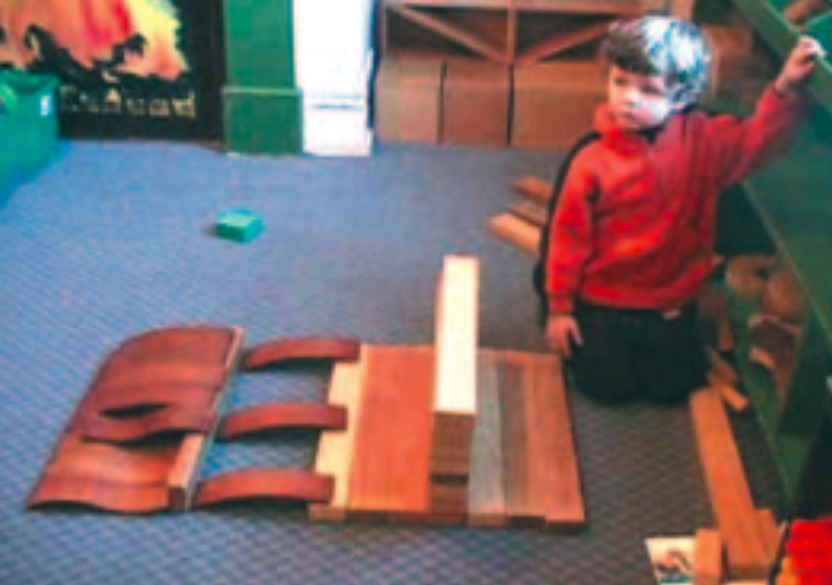

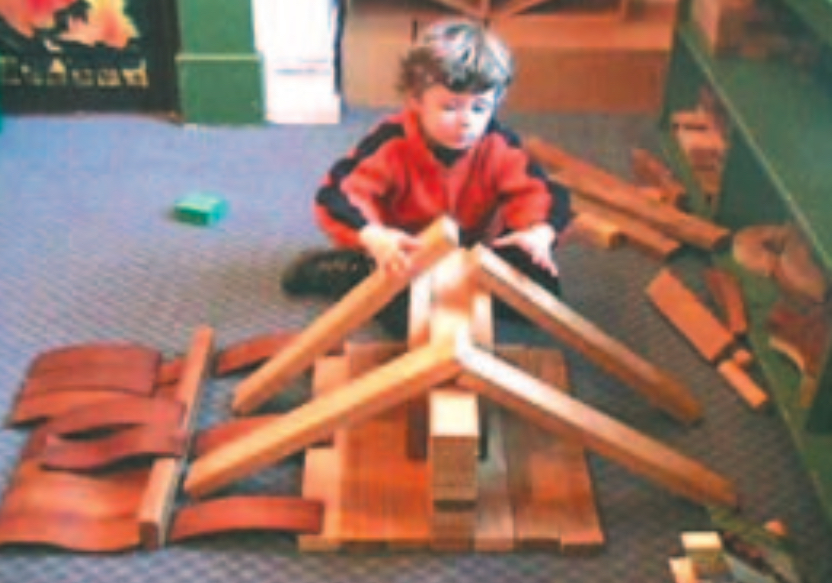

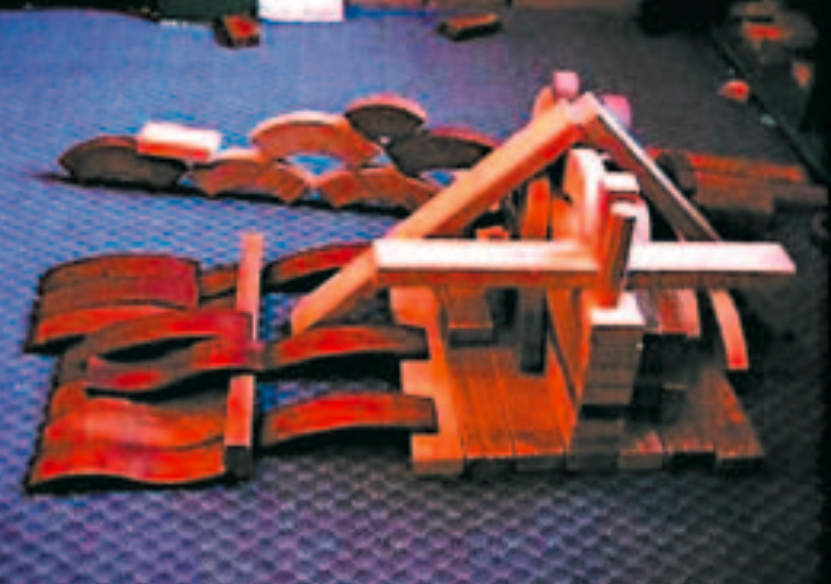

-
-
A story about clouds
-
Sandra’s story

“Look, look, look, look!” shouted Joey, excitedly waving his hands in front of my face. “What? What? What?” I jumped up to see just what was so amazing.
“Look!” exclaimed Joey, pointing up to the sky.
Well, what a sight! The most amazing cloud formation had formed. Stripey clouds were whizzing in the opposite direction to large, white, fluffy ones. Spectacular!
“Quick, go and tell Jill – she’ll love them,” I told Joey.
I then called the children to the hill, and we all lay on the hill to observe nature in action.
Jill’s story

Joey was playing outside. He raced inside, excitedly telling us about the clouds. We all went outside to see the two different types of clouds in the sky going in opposite directions.
The children lay on the hill, looking up, while Veronica informed us that they were stratus and cumulus clouds. Stratus clouds from the west and cumulus from the east. Lots of joy and wonder. Great observation, Joey!
Mum’s reaction
Joey’s father is a science teacher, but Lottie (his mother) feels this doesn’t necessarily direct Joey’s behaviour. She said, however, that Joey does tend to notice things in nature, especially things in the sky. If there is a full moon, Joey will spend time gazing at it. He loves choosing factual books from the library, and his latest choice includes one about poisonous animals.
-
-
Emptying the supervisor's bag
Child's name: Campbell
Date: 28 June
Teacher: Carol
A Learning Story
Belonging
Mana whenuaTaking an Interest Campbell delights in pulling objects out of the supervisor's bag (rolls, verification forms, and so on). He opens the books carefully for an eighteen-month-old. He scans the pages and, if he manages to find a pen (crayons are of little interest), he will hold the pen correctly and write small, precise symbols.
So as not to deter Campbell's interest in books and pens, the staff replaced the supervisor's bag with another bag.
Campbell investigated that bag ONCE, then set about climbing over the small fence and searching around until he found the original bag and proceeded to pull out the much-coveted books.
Squealing and chuckling, he proceeded to turn the pages.
Well-being
Mana atuaBeing Involved Exploration
Mana aotūroaPersisting with Difficulty Communication
Mana reoExpressing an Idea or a Feeling Contribution
Mana tangataTaking Responsibility Short-term review
- Has a specific interest and will persist to fulfil his desires.
- Has precise skills and takes care with books.
Campbell's mother says he love “reading” the junk mail.
What next?
- Find and old roll book
- Give Campbell opportunities to use pens and other media for writing.
-
Your brain is for thinking
-
Names: Koasigan and Cameron
18 November
Teacher: Lee
I found Koasigan and Cameron sitting on the floor together, viewing a book titled “How Your Body Works”. Cameron was turning the pages.
“Look at the funny hat,” said Cameron.
“Oh! That’s not a funny hat. It’s your brain. Your brain is for thinking,” said Koasigan in an informative manner.
“Look at this funny hat, too,” said Cameron.
“No, that’s your skull. It protects your brain. Stops it from being sandwiched,” said Koasigan.
Short-term review
Children are great teachers. Koasigan, with his kind manner, shared his knowledge and experience with Cameron. And Cameron, delighted with Koasigan’s informative manner, soaked up the learning experience.
A very treasurable moment!

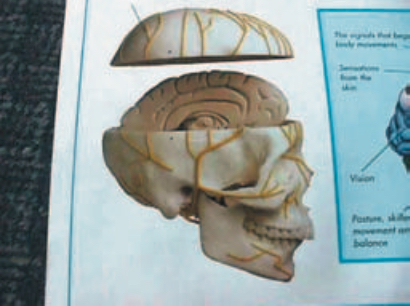
-
-
Tayla and "what next?"
Child's name: Tayla
Date: August
Teacher: Vicki
Examples or cues A Learning Story
Belonging
Mana whenuaTaking an Interest Finding an interest here – a topic, an activity, a role. Recognising the familiar, enjoying the unfamiliar. Coping with change. While we were sitting at the collage table busily pasting and cutting, Kupu calls out “matt time.” Tayla quickly gets up and walks to the entrance and calls:
"Haere mai ki te Whāriki."
She turns to me and give me the biggest grin, and walks back to the collage table.
Well-being
Mana atuaBeing Involved Paying attention for a sustained period, feeling safe, trusting others. Being playful with others and/or materials. Exploration
Mana aotūroaPersisting with Difficulty Setting and choosing difficult tasks. Using a range of strategies to solve problems when ‘stuck’ (be specific). Communication
Mana reoExpressing an Idea or a Feeling In a range of ways (specify). For example: oral language, gesture, music, art, writing, using numbers and patterns, telling stories. Contribution
Mana tangataTaking Responsibility Responding to others, to stories, and imagined events, ensuring that things are fair, self-evaluating, helping others, contributing to programme. Short-term review
Tayla is so quick to respond to situations without any prompting. Every day I am learning about Tayla's many skills and interests. She has beautiful reo and obviously knows her reo. Ka pai Tayla.
What next?
I'm just going to ask Tayla what next after I read this story to her!
-
Jack's interest in puzzles
-
Jack enjoys doing puzzles. He will search them out until he finds them and will spend relatively long periods of time working at completing them. The stacker puzzle remains Jack’s favourite puzzle.
The stacker puzzle
Jack searched out the stacker puzzle, which was on the middle shelf. He took it down and made a noise to get attention.
Jack took the puzzle pieces off. He looked up to see if anyone was watching. He smiled and continued to put the puzzle pieces on the baseboard.
Jack shows great concentration. When he concentrates, he usually lies on the floor with his tongue out.
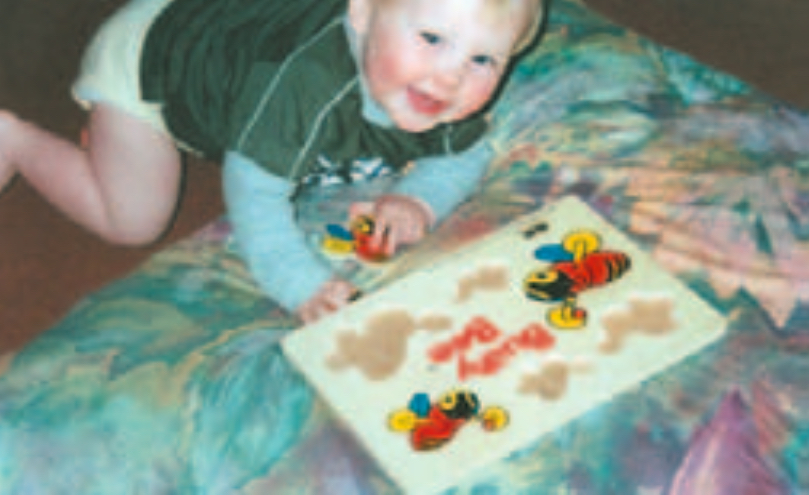
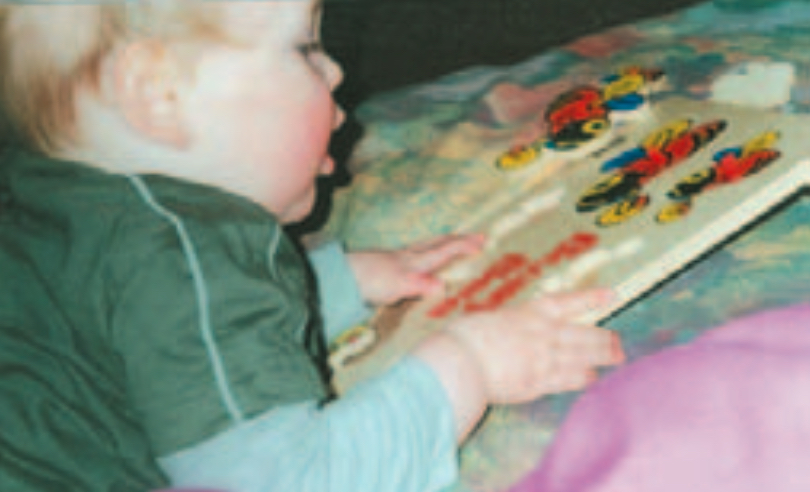

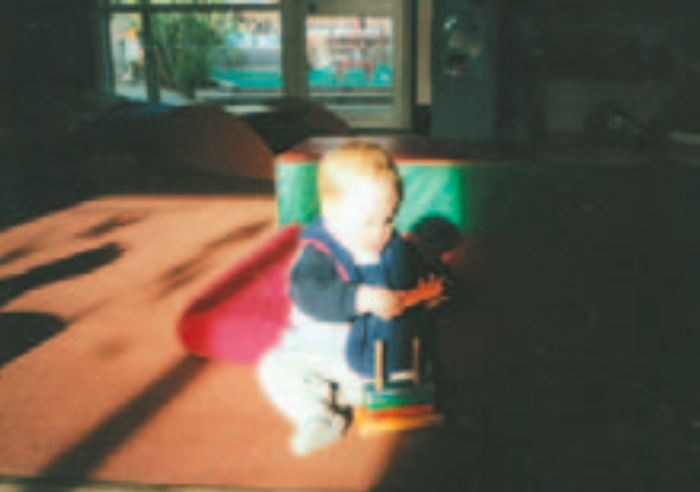
-
-
Ray learns to draw fish
-
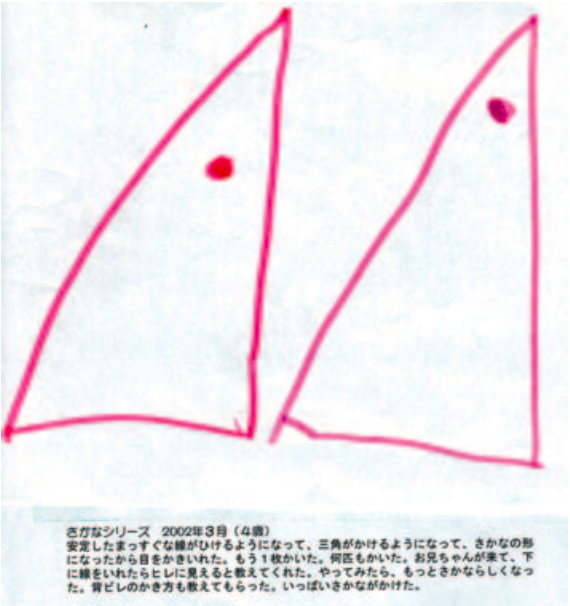
Fish March (4 years)
Ray has learned to draw nice, straight lines and nice triangles. He drew two triangles first and they looked like fish, so he drew in eyes. He drew another one and another one. Fish, fish, fish. Ben came along and said, “If you draw lines here, it will look more like fish.” Ray tried, and it did look better. He added fins and a lot more fish.

-
